In Texas’s vast and diverse landscapes, sparrows play a vital role in the intricate tapestry of avian life.
These small, agile birds, belonging to the family Passerellidae, have adapted to various habitats across the Lone Star State, from urban areas to expansive grasslands and dense woodlands.
With over a dozen species recorded in Texas, sparrows exhibit a remarkable array of plumage and behaviors.
Their distinctive songs echo through the air, adding a melodic charm to the Texan wilderness. Despite their unassuming size, sparrows contribute significantly to the state’s ecosystem, playing crucial roles in insect control and seed dispersal.
This introduction sets the stage for exploring the fascinating world of sparrows in Texas, highlighting their unique characteristics and ecological significance.
11 Sparrows in Texas
Here, we’ll explore the world of Texas sparrows, where their vibrant plumage, distinct songs, and diverse lifestyles paint a vivid portrait of avian diversity in this vast and dynamic state:
1. Eastern Towhee
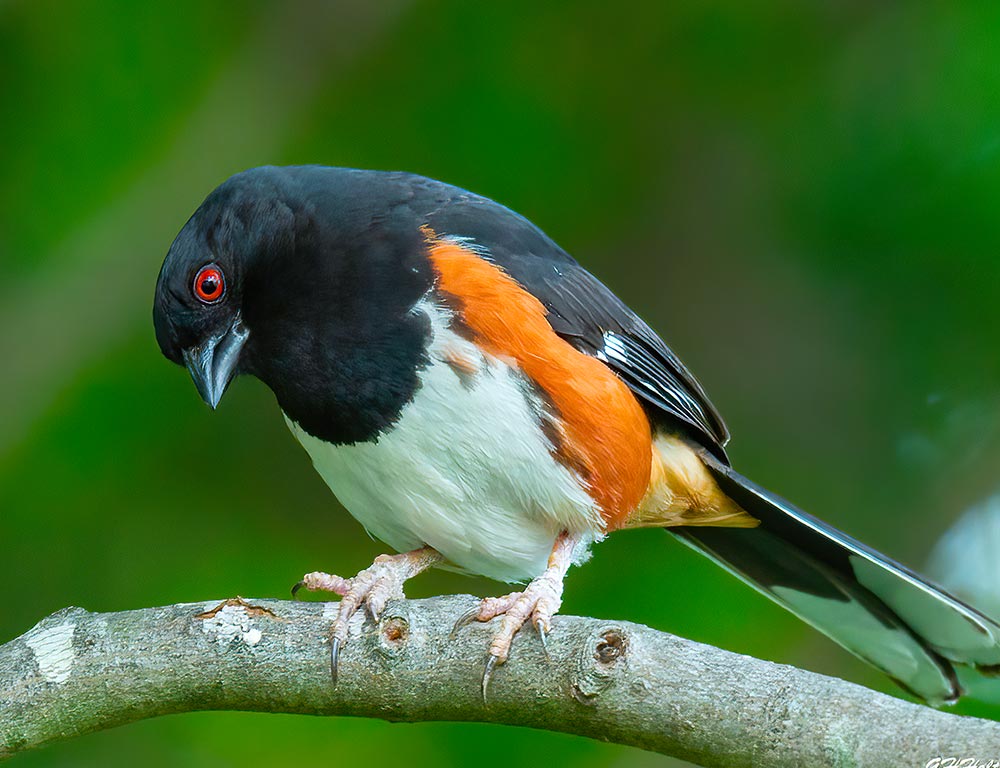
- Scientific Name: Pipilo erythrophthalmus
- Category: Songbird
- Population: Abundant in suitable habitats
- Life Span: 9 to 12 years
- Size: 7.5 to 9 inches
- Weight: Approximately 1.5 ounces
- Food: Insects, seeds, and fruits
- Wingspan: 11 to 12 inches
- Status: Least Concern
The Eastern Towhee, with its striking black, orange, and white plumage, thrives in brushy woodlands, preferring the understory for foraging.
This ground-dwelling sparrow utilizes its strong beak to uncover insects, seeds, and berries. Its melodic trill resonates through the foliage, a distinctive feature of its courtship and territorial communication.
Their diet comprises a mix of seeds, insects, and fruits, making them versatile feeders. With a lifespan ranging from 2 to 12 years, Eastern Towhees exhibit a distinct scratching behavior while searching for food, using their strong feet to kick away debris.
Eastern Towhees are adaptable and often spotted near the edges of forests or suburban areas, contributing to the rich avian diversity in Texas.
2. Field Sparrow
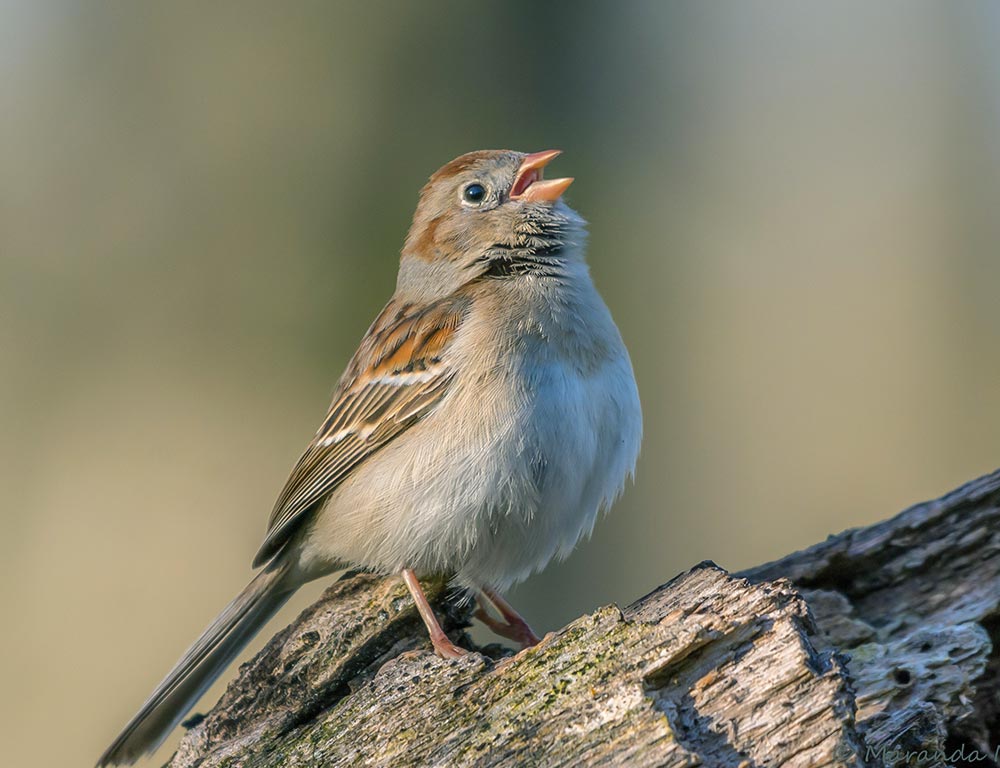
- Scientific Name: Spizella pusilla
- Category: Songbird
- Population: Stable
- Life Span: 2 to 5 years
- Size: 5.5 to 6 inches
- Weight: About 0.6 ounces
- Food: Seeds, insects, and berries
- Wingspan: 7.5 to 9 inches
- Status: Least Concern
The Field Sparrow, adorned with subtle brown and white markings, thrives in open grasslands and meadows. These sociable birds engage in melodious trills and distinctive calls, contributing to the enchanting soundscape of their habitats.
Preferring a diet of seeds, insects, and berries, Field Sparrows are integral to maintaining ecological balance, particularly in rural landscapes.
With a lifespan of 3 to 4 years, Field Sparrows contribute to ecosystem health by aiding in weed control and supporting plant diversity through seed dispersal.
Their ground-feeding habits make them a common sight across Texas, where they establish nests in grassy fields and prairies.
3. House Sparrow
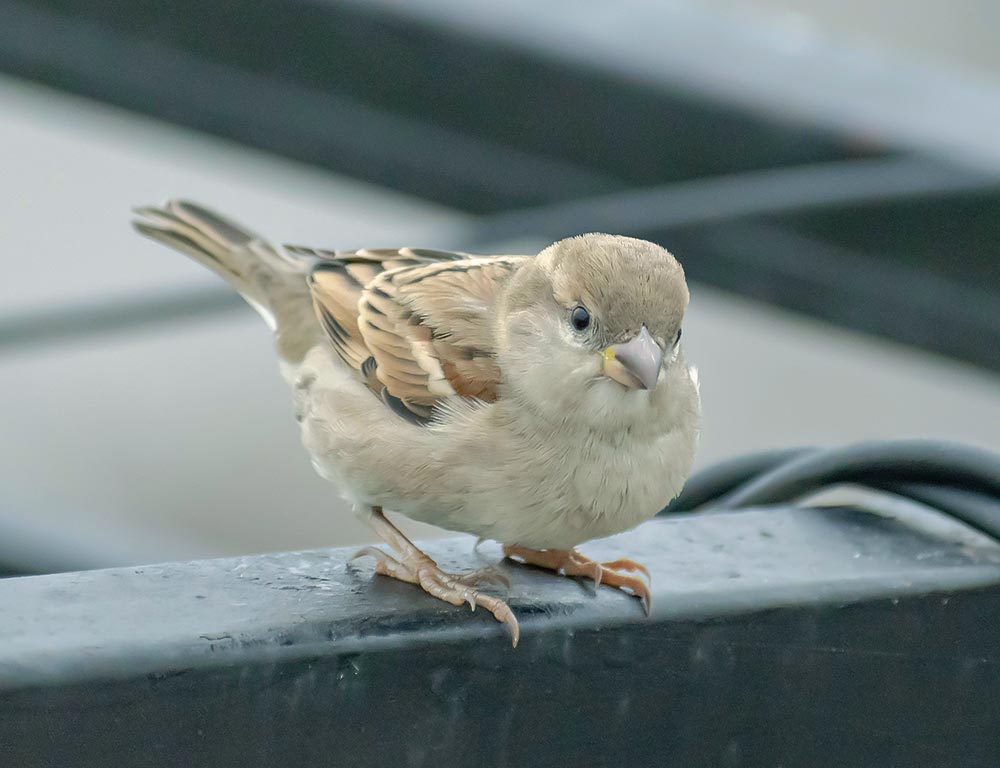
- Scientific Name: Passer domesticus
- Category: Invasive species
- Population: High and widespread
- Life Span: 3 to 5 years
- Size: 6 to 7 inches
- Weight: Approximately 1 ounce
- Food: Seeds, grains, and human food scraps
- Wingspan: 9 to 10 inches
- Status: Introduced species
The House Sparrow, though not native to North America, has become a ubiquitous presence in Texas.
Identified by its brown and gray plumage, this adaptable species often thrives in urban environments, taking advantage of human activities. House Sparrows exhibit social behavior and are commonly found near human settlements.
Their diet includes seeds, insects, and human food scraps. With a relatively short lifespan of 3 to 5 years, House Sparrows exhibit a remarkable ability to coexist with human activities.
Despite their success in adapting to new environments, the House Sparrow’s presence raises concerns about its impact on native bird populations.
4. Savannah Sparrow
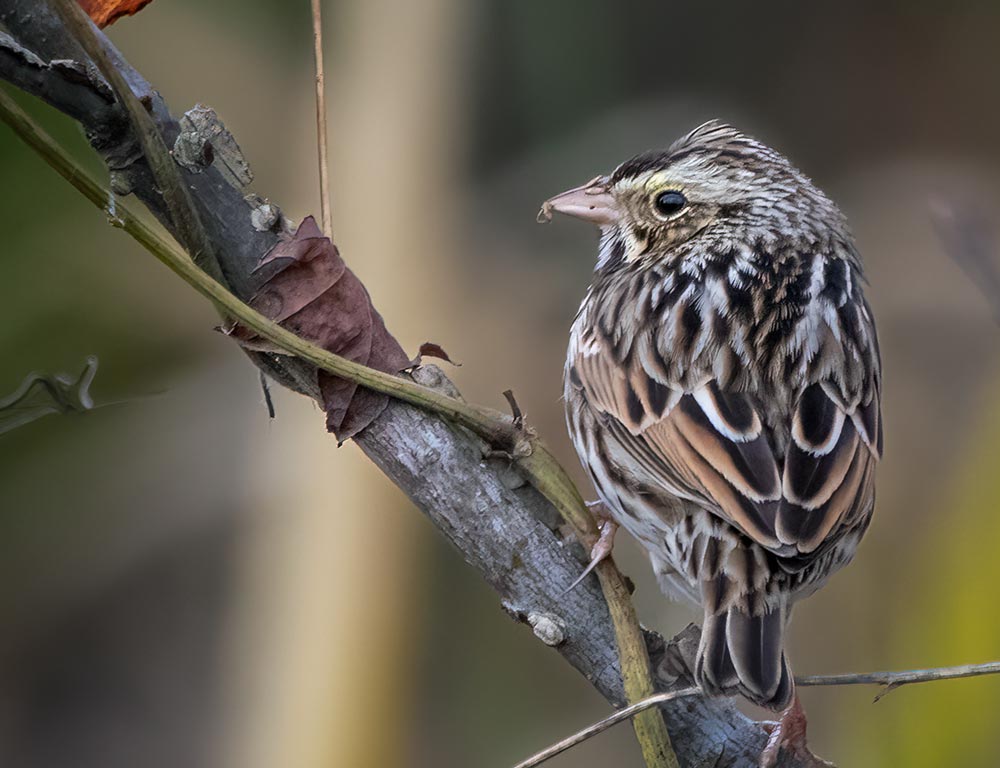
- Scientific Name: Passerculus sandwichensis
- Category: Songbird
- Population: Varies, generally stable
- Life Span: 2 to 5 years
- Size: 5.5 to 6 inches
- Weight: Around 0.6 ounces
- Food: Seeds, insects, and small invertebrates
- Wingspan: 8 to 10 inches
- Status: Least Concern
The Savannah Sparrow, characterized by its streaked brown and white plumage, thrives in various grassy habitats, including fields, meadows, and coastal marshes.
Agile and adaptable, these sparrows are known for their intricate songs and distinctive calls. With a diet consisting of seeds, insects, and small invertebrates, Savannah Sparrows contribute to the ecosystem by controlling insect populations.
They build cup-shaped nests on the ground, often concealed within vegetation, contributing to their camouflaged lifestyle.
Their diet primarily consists of insects, especially grasshoppers, and seeds. These sparrows are known for their insect-like buzzing calls during the breeding season, a distinctive characteristic of their courtship rituals.
Their widespread distribution across Texas showcases their ability to occupy diverse environments, from inland grasslands to coastal regions.
5. Seaside Sparrow
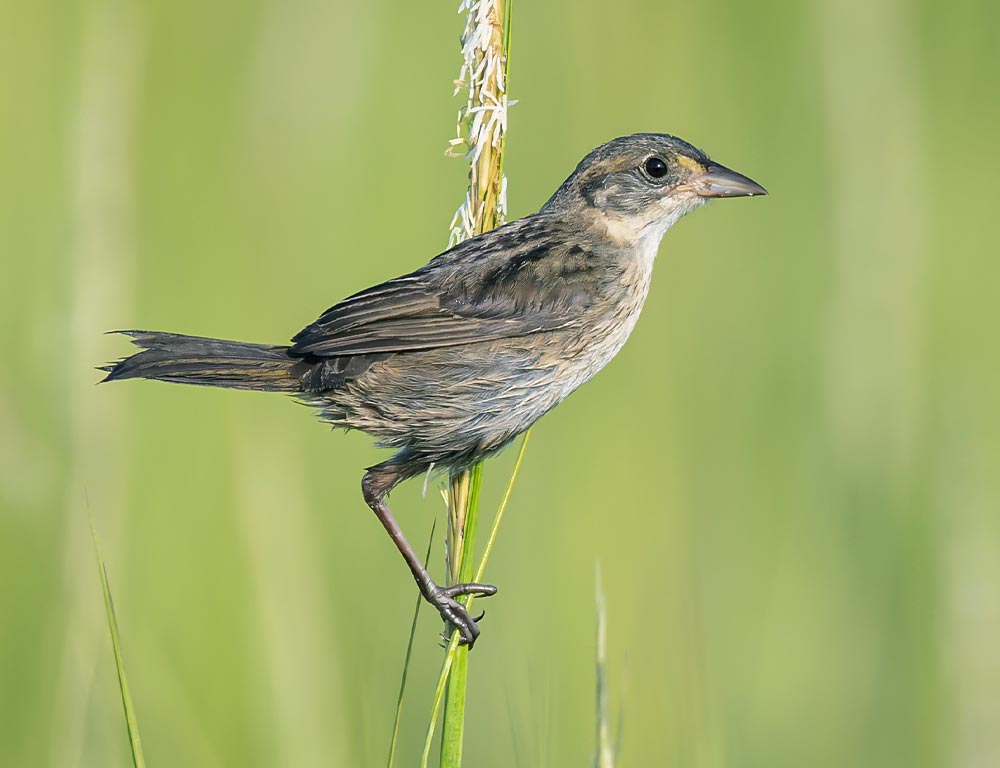
- Scientific Name: Ammospiza nigrescens
- Category: Songbird
- Population: Vulnerable
- Life Span: 2 to 4 years
- Size: 5.5 to 6 inches
- Weight: Approximately 0.8 ounces
- Food: Insects, small crustaceans, and seeds
- Wingspan: 8 to 9 inches
- Status: Near Threatened
With its distinct streaked plumage, the Seaside Sparrow is specially adapted to coastal habitats, including salt marshes and tidal zones. Found in Texas’ coastal regions, these sparrows prefer areas with abundant vegetation for nesting and foraging.
Seaside Sparrows play a crucial role in the delicate balance of coastal ecosystems by feeding on insects, small crustaceans, and seeds. Seaside Sparrows construct nests above the ground in marsh vegetation, providing protection from tidal fluctuations.
With a 2 to 4-year lifespan, these birds contribute to the delicate coastal ecosystem by controlling insect populations and participating in seed dispersal.
Despite their adaptability, habitat loss, and human disturbances threaten their populations, warranting conservation attention.
6. Chipping Sparrow
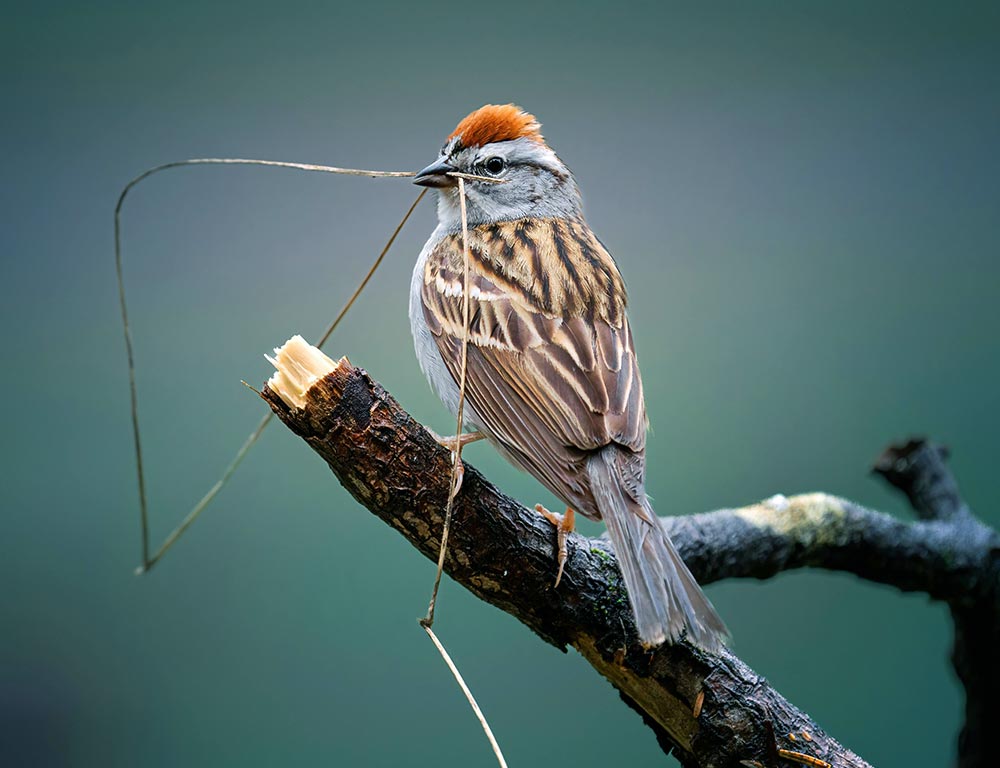
- Scientific Name: Spizella passerina
- Category: Songbird
- Population: Stable
- Life Span: 3 to 6 years
- Size: 5 to 6 inches
- Weight: About 0.5 ounces
- Food: Seeds, insects, and berries
- Wingspan: 7 to 9 inches
- Status: Least Concern
The Chipping Sparrow, adorned with a rufous cap, black eye stripe, and white underparts, is a common and widespread species in Texas.
Found in a variety of habitats, including gardens, woodlands, and open areas, these sociable sparrows are known for their distinctive vocalizations.
With a diet comprising seeds, insects, and berries, Chipping Sparrows contribute to the ecological balance by aiding in insect control and seed dispersal.
With an abundant population, these sparrows are often seen foraging on the ground for seeds and insects. Chipping Sparrows are adaptable to both urban and rural environments.
With a 3 to 6-year lifespan, these sparrows play a vital role in maintaining the ecological balance by controlling insect populations and participating in seed dispersal.
They build cup-shaped nests on the ground, often concealed within vegetation, contributing to their camouflaged lifestyle. Their adaptability to diverse environments and human-altered landscapes makes them a familiar sight throughout Texas.
7. Grasshopper Sparrow
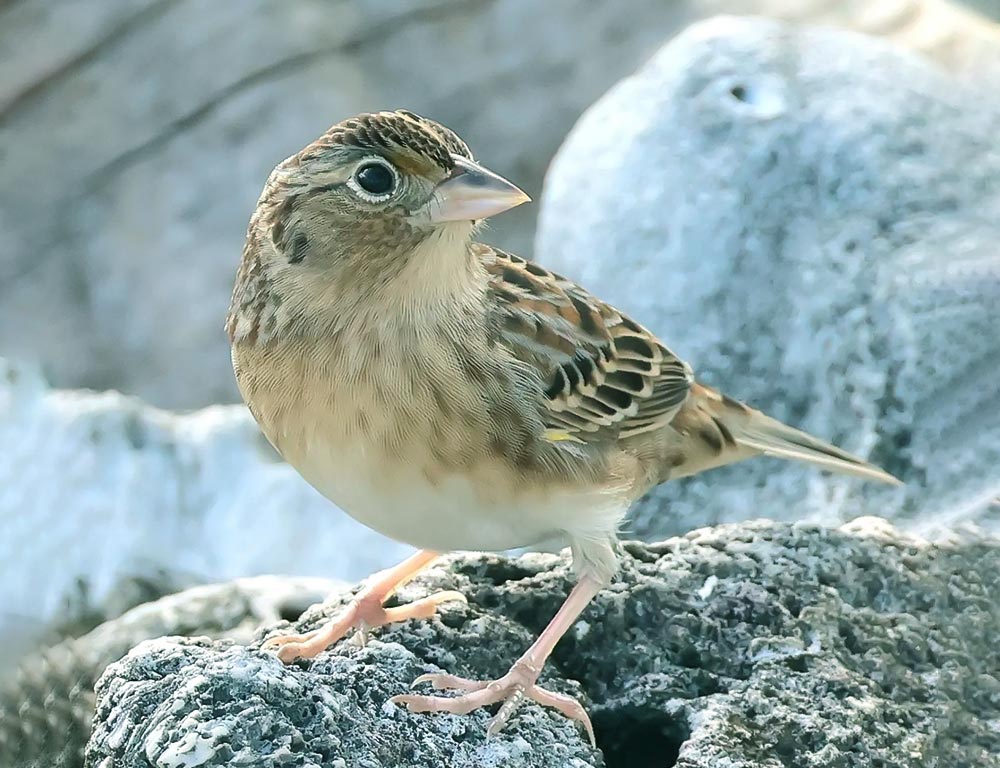
- Scientific Name: Ammodramus savannarum
- Category: Emberizidae
- Population: Declining
- Life Span: 2 to 4 years
- Size: 4.5 to 5.5 inches
- Weight: 0.4 to 0.8 ounces
- Food: Insects, seeds
- Wingspan: 7 to 8 inches
- Status: Near Threatened
The Grasshopper Sparrow, distinguished by its intricate streaked pattern and small size, inhabits grasslands and prairies throughout Texas.
This elusive species faces a declining population, mainly due to habitat loss. With a lifespan of 2 to 4 years, Grasshopper Sparrows are ground-nesters, creating concealed nests within the grass.
Their diet primarily consists of insects, especially grasshoppers, and seeds. These sparrows are known for their insect-like buzzing calls during the breeding season, a distinctive characteristic of their courtship rituals.
Conservation efforts are crucial to ensure the survival of this species, as they contribute to maintaining the delicate balance of insect populations in their grassland habitats.
8. Lark Sparrow
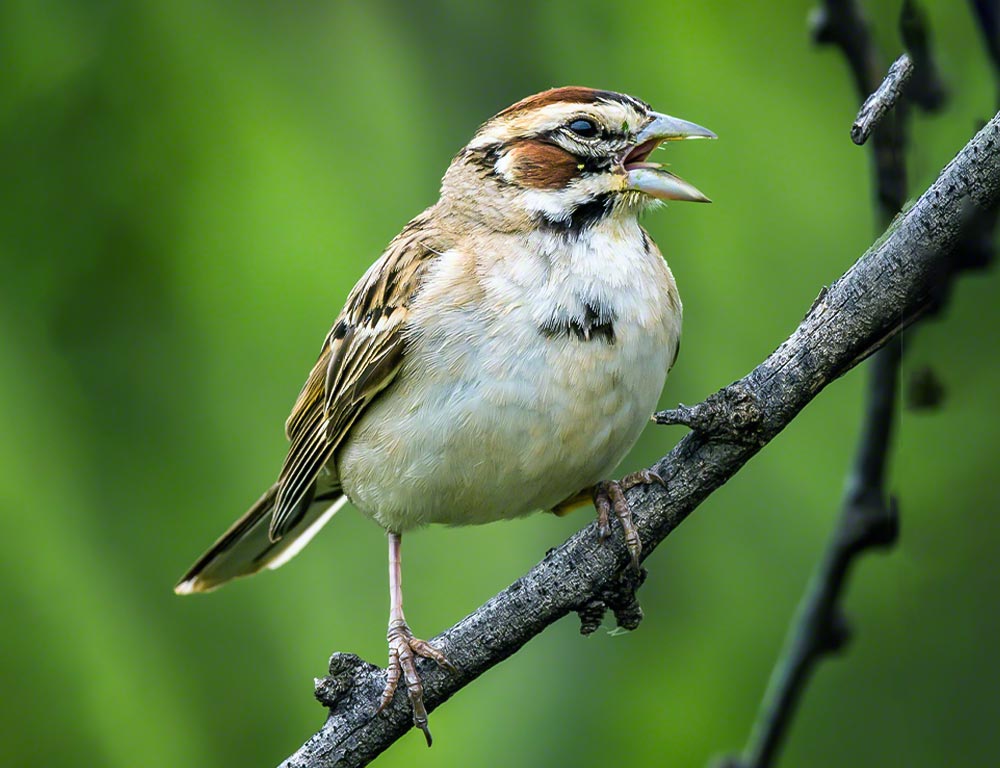
- Scientific Name: Chondestes grammacus
- Category: Passerellidae
- Population: Stable
- Life Span: 4 to 6 years
- Size: 6 to 7 inches
- Weight: 0.9 to 1.2 ounces
- Food: Seeds, insects
- Wingspan: 8 to 9 inches
- Status: Least Concern
The Lark Sparrow, with its striking facial pattern and bold markings, is a resident of open country and grasslands in Texas.
With a stable population, these sparrows exhibit a diverse diet, feeding on a combination of seeds and insects. Their characteristic trilling song and distinctive appearance make them easily recognizable.
Lark Sparrows are ground-nesting birds that create cup-shaped nests within vegetation. With a 4 to 6-year lifespan, they contribute to ecosystem health by aiding in weed control and supporting plant diversity through seed dispersal.
Their adaptability to both natural and human-altered landscapes makes them a resilient and captivating species in the Texan avian community.
9. Song Sparrow
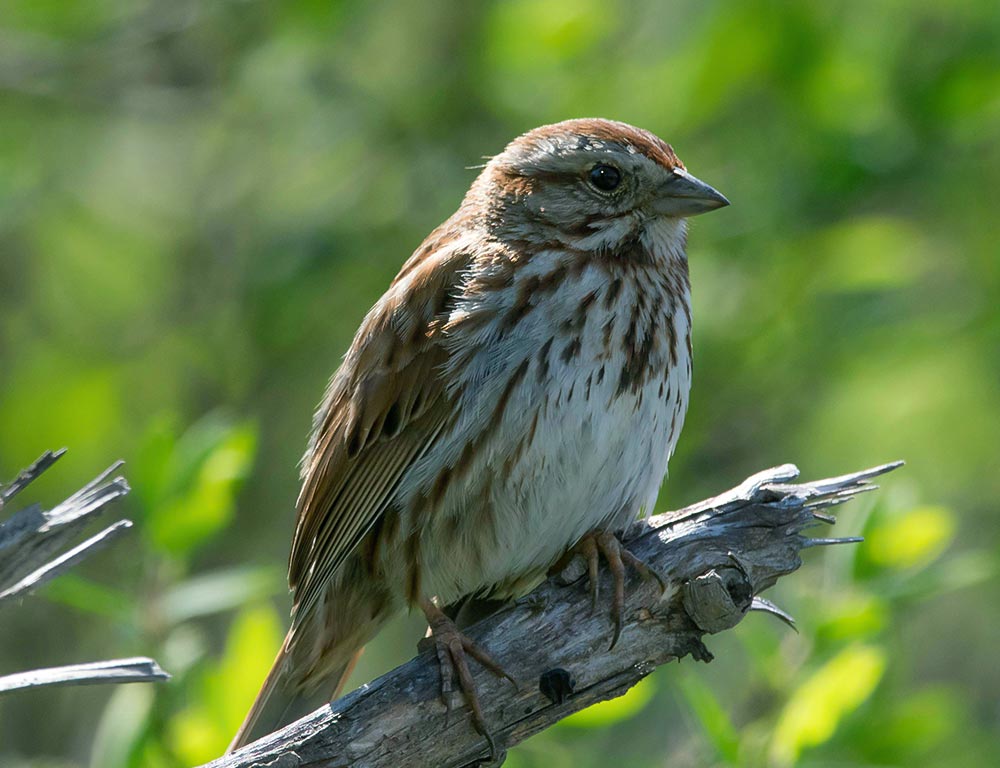
- Scientific Name: Melospiza melodia
- Category: Emberizidae
- Population: Abundant
- Life Span: 3 to 7 years
- Size: 5.5 to 7 inches
- Weight: 0.5 to 1 ounce
- Food: Seeds, insects
- Wingspan: 8 to 9 inches
- Status: Least Concern
The Song Sparrow, adorned with streaked plumage and a melodic song, is a common and widespread species in Texas. With an abundant population, these adaptable birds thrive in various habitats, including marshes, meadows, and urban areas.
Their diet consists of seeds and insects, and they are known for their distinctive singing, which varies across different regions. Song Sparrows build cup-shaped nests in dense vegetation, contributing to the avian chorus of their surroundings.
With a lifespan of 3 to 7 years, they play a crucial role in seed dispersal and insect population control, showcasing their importance in maintaining the ecological balance of Texas ecosystems.
10. Swamp Sparrow
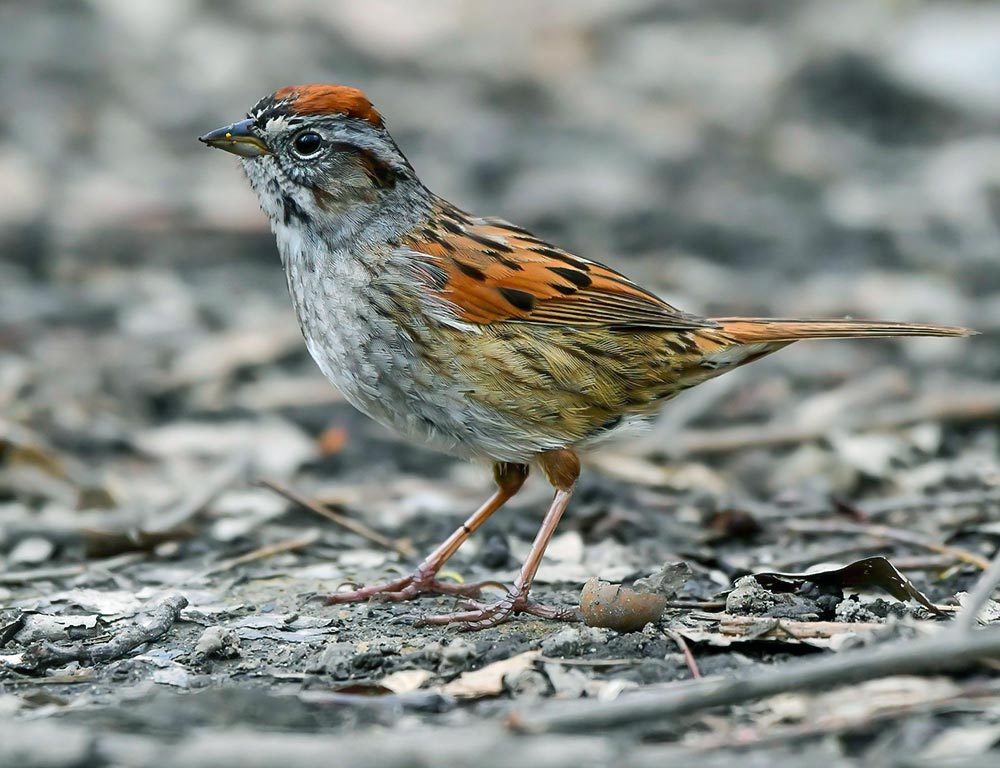
- Scientific Name: Melospiza georgiana
- Category: Emberizidae
- Population: Stable
- Life Span: 2 to 5 years
- Size: 5 to 6 inches
- Weight: 0.6 to 1 ounce
- Food: Insects, seeds, aquatic vegetation
- Wingspan: 7 to 8 inches
- Status: Least Concern
The Swamp Sparrow, adorned with rich reddish-brown plumage and a distinctive facial pattern, is a resident of wetlands and marshes in Texas.
With a stable population, these sparrows exhibit an affinity for dense, marshy vegetation. Their diet includes a diverse mix of insects, seeds, and even aquatic vegetation, showcasing their adaptability to marshland habitats.
Swamp Sparrows build cup-shaped nests low in the vegetation, often near water, contributing to their preference for concealed nesting sites.
With a 2 to 5-year lifespan, these birds play a crucial role in marsh ecosystems by controlling insect populations and participating in seed dispersal.
Their unique combination of coloring and habitat preferences makes them a captivating and integral part of Texas’s avian diversity.
11. Vesper Sparrow
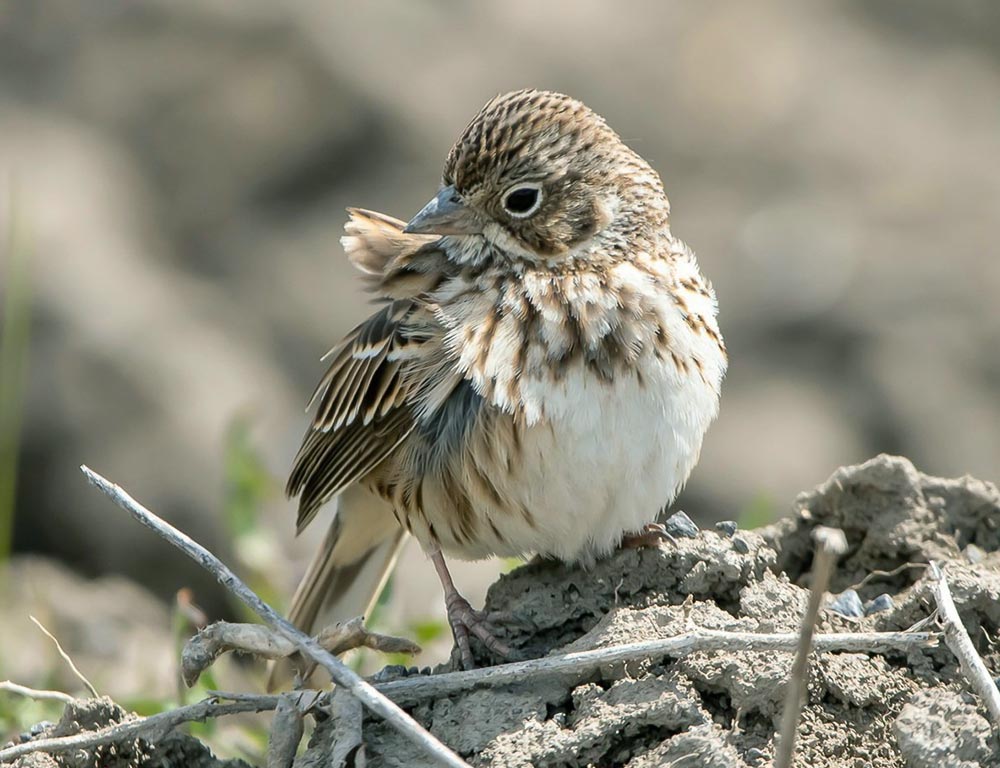
- Scientific Name: Pooecetes gramineus
- Category: Emberizidae
- Population: Declining
- Life Span: 2 to 4 years
- Size: 5.5 to 7 inches
- Weight: 0.7 to 1.2 ounces
- Food: Seeds, insects
- Wingspan: 9 to 11 inches
- Status: Near Threatened
The Vesper Sparrow, characterized by its streaked plumage and distinctive white eye-ring, is a grassland dweller facing a declining population in Texas.
Found in open grassy areas, these sparrows are known for their melodious vesper-like song during the breeding season.
Their diet consists of seeds and insects, reflecting their adaptability to grassland ecosystems. Vesper Sparrows build cup-shaped nests on the ground, often hidden within vegetation.
With a 2 to 4-year lifespan, these birds contribute to the grassland ecosystem by controlling insect populations and supporting plant diversity through seed dispersal.
Conservation efforts are crucial to address habitat loss and ensure the survival of this species, which plays a vital role in maintaining the balance of Texas’s grassland avian communities.
Wrapping Up
In the vast expanse of Texas, sparrows emerge as unsung heroes, contributing to the state’s ecological harmony.
Each species plays a vital role in seed dispersal, insect control, and the melodic symphony of Texas’s avian landscape, from the vibrant Eastern Towhee to the marsh-loving Swamp Sparrow.
Their adaptability to diverse habitats, resilience in the face of environmental challenges, and distinctive characteristics underscore their importance in maintaining the delicate balance of Texas ecosystems.
As we marvel at the subtle nuances of each species, we gain a deeper appreciation for the intricate connections that sparrows weave, reminding us that even the smallest birds leave a lasting impact on the grand stage of Texan wildlife.